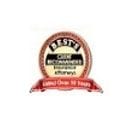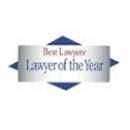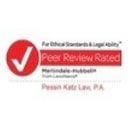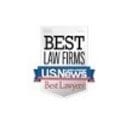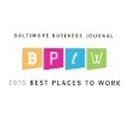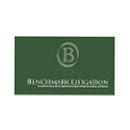
On March 27, 2020, President Trump signed the Coronavirus Aid, Relief and Economic Security Act (“CARES Act”) into law. As part of that law, the Paycheck Protection Program was enacted to allow small businesses to borrow money to help keep their businesses in operation. PK Law is available to assist in interpretation of the CARES Act and the loan program for your business. PK Law has compiled this Q&A in order to answer some frequently asked questions about the Program. This Q&A will be updated regarding the loan program and other provisions of the CARES Act. You are encouraged to send your questions to any of our attorneys in our Corporate and Real Estate Group or email information@pklaw.com.
CARES Act – Keeping American Workers Paid and Employed Act – Paycheck Protection Program – Q&A
April 3, 2020
Below are the salient points contained in the PPP Regulations released on the evening of April 2, 2020:
- Interim final order of regulations is effective immediately, although comments will still be accepted for next 30 days;
- Requirements of PPP identified in this rule temporarily supersede and conflicting Loan Program Requirement;
- Ineligible recipients of PPP loan include:
- A business engaged in any activity that is illegal under federal, state, or local law;
- A household employer (individuals who employ household employees such as nannies or housekeepers);
- An individual or business with an equity owner of more than 20% who is incarcerated, on probation, on parole, presently subject to indictment, criminal information, arraignment, or other means by which formal criminal charges are brought in any jurisdiction, or has been convicted of a felony in the last five years;
- An individual or business in which any owner has ever obtained a direct or guaranteed loan from SBA or any other Federal agency that is currently delinquent or has defaulted within the last seven years and caused a loss to the government.
- Independent contractors do not count as employees for purposes of PPP loan calculations or for loan forgiveness;
- INTEREST RATE ON PPP LOAN IS 1% (previous Treasury guidelines suggested .5% but the regulation changes the interest rate);
- LOAN MATURITY DATE ON PPP LOAN IS 2 YEARS (Act provides “up to 10 years” but Administrator, in consultation with Secretary of Treasury, has determined two year maturity is sufficient;
- Borrower may apply for only 1 PPP loan. Administrator recommends applying for maximum loan amount since only one loan will be available to any single borrower;
- PPP is FIRST COME FIRST SERVE;
- PAYMENTS DEFERRED FOR 6 MONTHS, not for the year provided for in the Act. The Administrator, in consultation with Secretary of Treasury determined 6 month deferral is appropriate;
- NOT MORE THAN 25% OF LOAN FORGIVENESS MAY BE ATTRIBUTABLE TO NON-PAYROLL COSTS. (SBA will issue additional guidance on loan forgiveness);
- Receipt of EIDL loan between January 31, 2020 and April 3, 2020: If proceeds of EIDL were not used for payroll costs it does not affect eligibility for PPP Loan. If EIDL loan was used for payroll costs, the PPP loan must be used to refinance the EIDL loan. Proceeds from any advance up to $10,000 on EIDL loan will be deducted from loan forgiveness amount on the PPP loan;
- All SBA 7(a) lenders automatically approved to make PPP loans. The Administrator and Secretary of Treasury have determined additional lenders are necessary to carry out purposes of Cares Act. Additional lenders have been determined to meet criteria and are eligible to make PPP loans (unless currently designated in Troubled Condition or subject to formal enforcement action). The following additional lenders are automatically approved upon transmission of Cares Act Section 1102 Lender Agreement (SBA Form 3506):
- All federally insured depository institutions or any federally insured credit union;
- Any Farm Credit System institution;
- Any depository or non-depository finance provider that originates, maintains, and services business loans or other commercial financial receivables and participation interests that has: a formalized compliance program; applies the requirements under the BSA as a federally regulated financial institution; has been operating since at least February 15, 2019, and; has originated, maintained and serviced more than $50 million in business loans or other commercial financial receivables during a consecutive 12 month period in the past 36 months, or is a service provider to any insured depository institution that has a contract to support such institution’s lending activities in accordance with 12 U.S.C. Section 1867(c) and is in good standing with the appropriate Federal banking agency.
- Lenders are allowed to rely upon borrower certifications to determine borrower eligibility and to rely upon specified documents provided by borrower to determine qualifying loan amount and eligibility for loan forgiveness. Lenders must comply with applicable lender obligations set forth in this interim final rule, but will be held harmless for borrower’s failure to comply with program criteria;
- Lenders need not conduct any verification for loan forgiveness if borrower submits documentation supporting the request for loan forgiveness and attests that it has accurately verified the payments for eligible costs. The Administrator will hold harmless any lender that relies on such borrower documents and attestations.
- Lender Fees:
- 5% for loans of not more than $350,000;
- 3% for loans of more than $350,000 and less than $2,000,000;
- 1% for loans of at least $2,000,000.
- Agents fees will be paid by lender out of fees lender receives. Agent may not collect fees from borrower or be paid from PPP loan proceeds. Agent fees:
- 1% for loans of not more than $350,000;
- .5% for loans of more than $350,000 and less than $2,000,000;
- .25% for loans of at least $2,000,000.
Based on inquiries we have received. We have updated our Q&A.
April 2, 2020
Are payments to independent contractors included in the definition of payroll costs under the PPP?
Generally, payroll costs do not include payments made to independent contractors as they are not considered employees of a business. The definition of “payroll costs” in the PPP is unclear as to whether payments to independent contractors could be included as “similar compensation.” However, the fact that the PPP is clear as to whether a sole-proprietor and/or independent contractor is independently eligible for a PPP loan, EIDL and Emergency EIDL Grant, it is our conclusion that it was the intent that such payments not be included in the definition. PK Law is closely following all guidance being provided on this and other areas of ambiguity and will update this answer as necessary.
What happens to my loan forgiveness if I have laid off or reduced wages or salaries of employees?
The amount of loan forgiveness is reduced by the reduction in full-time equivalent employees per month compared to (at Borrower’s election) the period from February-June 2019 or January -February 2020 and by a 25%+ reduction in salaries of employees who make less than $100K. There is an exception to the reduction in forgiveness for employers who laid off employees or reduced their salaries between February 15, 2020 and April 26, 2020 and who rehired or re-raised salaries by June 30, 2020.
What are Emergency EIDL Grants under the PPP?
Those businesses whose circumstances render them eligible to receive a PPP loan may also be eligible to receive a Small Business Administration (“SBA”) economic injury disaster loan (“EIDL”). The emergency loans can be for an amount of up to $2 million and carry interest rates up to 3.75% for companies and up to 2.75% for nonprofits, as well as principal and interest deferment for up to four years. The SBA waives the requirements that a borrower demonstrate the requested credit cannot be obtained elsewhere and eliminates the need for a personal guaranty of a loan in an amount not more than $200,000. The first payment on the loan issued due to coronavirus will be automatically deferred for one year. The loans may be used for expenses that could have been met had the disaster not occurred, including payroll and other operating expenses. When a business applies for an EIDL, it can also apply for an emergency grant of up to $10,000. The SBA intends to provide the grant within three days of receiving the application, and the grant does not need to be repaid, even if the grantee is subsequently denied an EIDL. It may be used to provide paid sick leave to employees, maintain payroll, meet increased production costs due to supply chain disruptions, and make rent and mortgage payments. Eligible grant recipients must have been in operation on January 31, 2020. An EIDL is not forgivable.
Can I apply for both the EIDL and a PPP loan?
If you applied for an EIDL after January 31, 2020 and have already received it, you may refinance your EIDL into a PPP loan. If you have received an EIDL grant, the amount of the grant will be subtracted from the amount forgiven in the PPP loan.
While some guidance indicates that those who have not yet applied for an EIDL may apply for both an EIDL and a PPP loan, information we have received from lenders indicates that those who have applied for an EIDL may be rejected or disqualified from receiving a PPP loan. Borrowers should compare the pros and cons of the two loans based on their particular circumstances to see which loan is best for their business. The SBA has not yet published guidelines on this topic, and guidance from lenders and other sources is evolving. We will update the information provided herein as more guidance becomes available.
March 31, 2020
Who is eligible?
The loan program is for any business concern, nonprofit organization, veterans’ organization, or Tribal business if it employs no more than 500 employees (or a greater number based on the size standard applicable to the industry). This number includes full-time and part-time employees and those employed on other bases. Exceptions apply to certain companies in the Accommodation and Food Service Industry (NAICS Code 72). Sole proprietors, independent contractors and self-employed individuals (as defined in the Families First Coronavirus Act) are eligible. The business must have suffered financially due to the coronavirus outbreak.
For eligibility purposes, the program requires lenders to determine whether a business was operational on February 15, 2020, and either had employees for whom it paid salaries and payroll taxes or a paid independent contractor. (This eligibility requirement is likely to be interpreted to replace the determination of repayment ability, which is not possible during the crisis.)
Will certain businesses receive priority?
The CARES Act provides that the Administrator should issue guidance to lenders and agents to ensure that processing and disbursement of covered loans prioritizes small business concerns; entities in underserved and rural markets (including veteran communities); small business concerns owned by socially and economically disadvantaged individuals; women; and businesses in operation for less than two years.
Do borrowers have to put up collateral, personal guaranty, etc.?
The program waives the credit available elsewhere, personal guaranty and collateral requirements for the borrower.
What can the loan proceeds be used for?
The loan proceeds can be used for a variety of qualified costs related to employee compensation and benefits, including payroll costs, rent, utilities, continuation of health care benefits, employee compensation for those making less than $100K, mortgage interest obligations, and interest on debt incurred before the covered period. For those employees making above $100K, the loan proceeds able to be applied to forgiveness are limited to $100K of compensation.
How much can a business borrow and what is the interest rate?
Loan amounts can be 2.5 x the average total monthly payroll costs, or up to $10 million (whichever is less). The interest rate may not exceed 4%.
What are the loan deferment and forgiveness provisions?
The borrow may be eligible for loan forgiveness equal to the amount spent by the borrower during an 8-week period after the origination date on (i) rent, (ii) payroll costs for workers making less than $100K, (iii) interest on a mortgage, and (iv) utility payments. The amount forgiven may not exceed the principal of the loan. The amount forgiven will be reduced proportionally by any reduction in employees retained compared to the prior year. To encourage employers to rehire any employees who have already been laid off due to the COVID-19 crisis, borrowers that re-hire workers previously laid off will not be penalized for having a reduced payroll at the beginning of the period. Loan payments may be deferred for a minimum of six months and up to one year.
What must a borrower submit to trigger loan forgiveness?
Borrowers seeking forgiveness of amounts must submit the following information to their lenders: documentation verifying full time equivalent employees on payroll and their pay rates; documentation on covered costs/payments (i.e. documents verifying mortgage, rent and utility payments); certification from a business representative that the documentation is true and correct and that forgiveness amounts requested were used to retain employees and make other forgiveness-eligible payments; and any other documents the Administrator of the Small Business Administration may require. The Administrator has 30 days following enactment of the CARES Act to issue regulations on the forgiveness provisions. We will be updating this information as new guidelines and regulations regarding the CARES Act are issued.
What happens if the borrower does not repay the loan?
The only reason the SBA will have recourse against a borrower for the borrower’s failure to repay the loan is if the borrower used the loan for something other than permissible uses (described above). This is why it is especially important to keep detailed records of the use of the loan proceeds.
The information presented in this article and this website has been prepared by Pessin Katz Law, P.A., is intended for informational purposes only, and is not legal advice. Transmission of this information is not intended to create, and receipt of this information does not constitute an attorney-client relationship. While we have attempted to provide information in this article as accurately as possible, the information in this article may contain errors or omissions for which we disclaim liability. This article and information on this website contains information on legal issues and is not a substitute for legal advice from a qualified attorney licensed in an appropriate jurisdiction. Pessin Katz Law, P.A. expressly disclaims all liability with respect to actions taken or not taken based on any or all of the contents of this article.

